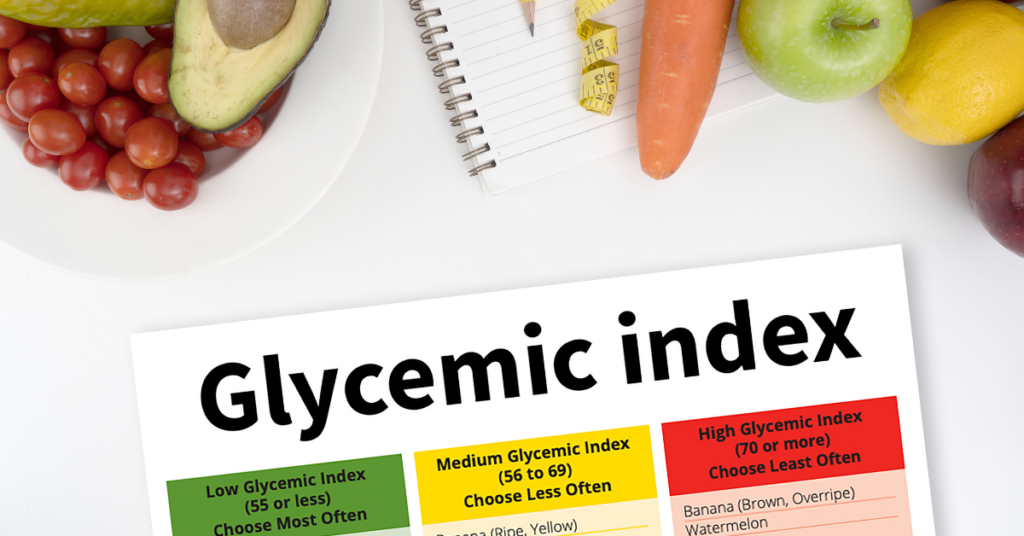
Understanding the glycemic index of the foods you eat can be an important tool in managing your diabetes. The glycemic index measures how much a certain food raises your blood sugar level, and it’s not just for diabetics; people who want to lose weight may also benefit from this information.
By knowing what foods to eat and which ones to avoid, you can better control your blood sugar levels and help prevent serious complications from developing as a result of poorly managed diabetes.
In this article, you’ll learn about the glycemic index and how it can help improve your health if you have diabetes.
What is the glycemic index ?
The glycemic index (GI) is a measure of how quickly a food raises blood sugar levels after it’s eaten. Foods are ranked on a scale from 0 to 100, with pure glucose serving as a reference point for comparison at 100.
Carbohydrates that break down quickly during digestion and release glucose into your bloodstream fast, such as table sugar and breads made with refined flour, will have high GI scores.
Low-GI foods include beans, lentils, legumes and whole grains. People with diabetes or who are at risk for developing diabetes should keep their GI in mind when choosing foods because those low in carbohydrates can help to maintain stable blood-glucose levels throughout the day.
Why is it important to eat foods low on the GI?
The glycemic index (GI) measures how quickly foods containing carbohydrates raise blood sugar levels. For example, potatoes have a GI of about 95. White bread has a GI of about 70, and whole wheat bread has a GI of about 52.
A food that contains 50 grams of carbohydrate from white bread (such as 2 slices of toast with jam) raises blood sugar more than double as much as when you eat 50 grams of carbohydrate from whole wheat bread.
When your body digests and absorbs food it turns most carbs into glucose, which is then released into your bloodstream to fuel all those cells in your body that need energy to do their jobs!
That’s why eating low-GI foods helps control our insulin response.
Glycemic index vs Glycemic load
A glycemic index is a number assigned to foods based on how much they raise blood sugar.
High GI foods can spike your blood sugar and insulin levels, which may encourage fat storage. If you’re diabetic, then you’ll want to avoid high-GI foods. But if you’re not a diabetic, it’s probably OK to eat them in moderation.
A better metric for diabetics might be glycemic load.
With glycemic load, you take into account both the glycemic index of a food and its amount of carbs in order to get a more accurate representation of how that food will affect your blood sugar level.
Why are nuts a good choice?
Nuts have a low glycemic index (GI) rating, which means they won’t raise your blood sugar levels very quickly. Even better, you can use them as an option for grazing throughout the day—these filling snacks help keep your appetite in check and prevent you from overeating at meals.
Nuts also provide a protein boost. A 1-ounce serving of almonds, for example, contains about 6 grams of protein—that’s nearly half of what an average person needs each day.
If you have diabetes and eat nuts as part of a healthy diet plan, they can help control blood sugar levels while providing important nutrients that keep your body working well.
Avoiding sugar substitutes
As it turns out, artificial sweeteners can actually have a high glycemic index (GI), meaning they cause our blood sugar levels to increase rapidly and substantially. As diabetics are well aware, sudden spikes in glucose levels can lead to severe health problems like nerve damage and blindness.
The bottom line is that diabetics should avoid consuming foods with artificial sweeteners – especially products marketed as diet or low-calorie. If you’re looking for sweet taste without artificial substitutes, try honey or stevia.
Highest Glycemic Index foods for diabetics
The glycemic index of a food is an important tool for anyone who has diabetes, or who wishes to prevent it. Foods with a high glycemic index (70 or above) cause large blood sugar fluctuations that can increase blood sugar levels dramatically and result in unstable energy levels.
Here are some foods with a high glycemic index: white bread (90), instant oatmeal (89), baked potato with skin (85) and ice cream (80). Foods low on the glycemic index scale have less effect on blood sugar levels, which benefits people with diabetes by stabilizing their energy level so they can focus on other tasks.
Low-glycemic foods include most fruits and vegetables, beans, lentils and barley as well as nuts like almonds and hazelnuts.
Taking Control of Your Diabetes
Foods with a low glycemic index [1] are generally considered more healthy than those with a high glycemic index.
But keep in mind that serving size makes a big difference when it comes to GI— ( (Glycemic load takes into account both serving size and GI.) ) and in some cases, fiber and protein can influence how quickly your body digests certain foods.
Also, keep in mind that serving size makes a big difference when it comes to GI—and in some cases, fiber and protein can influence how quickly your body digests certain foods.

Lifebing is driven by an unrelenting passion for promoting health and well-being, our team is wholly committed to curating exceptional content and immersive experiences.
